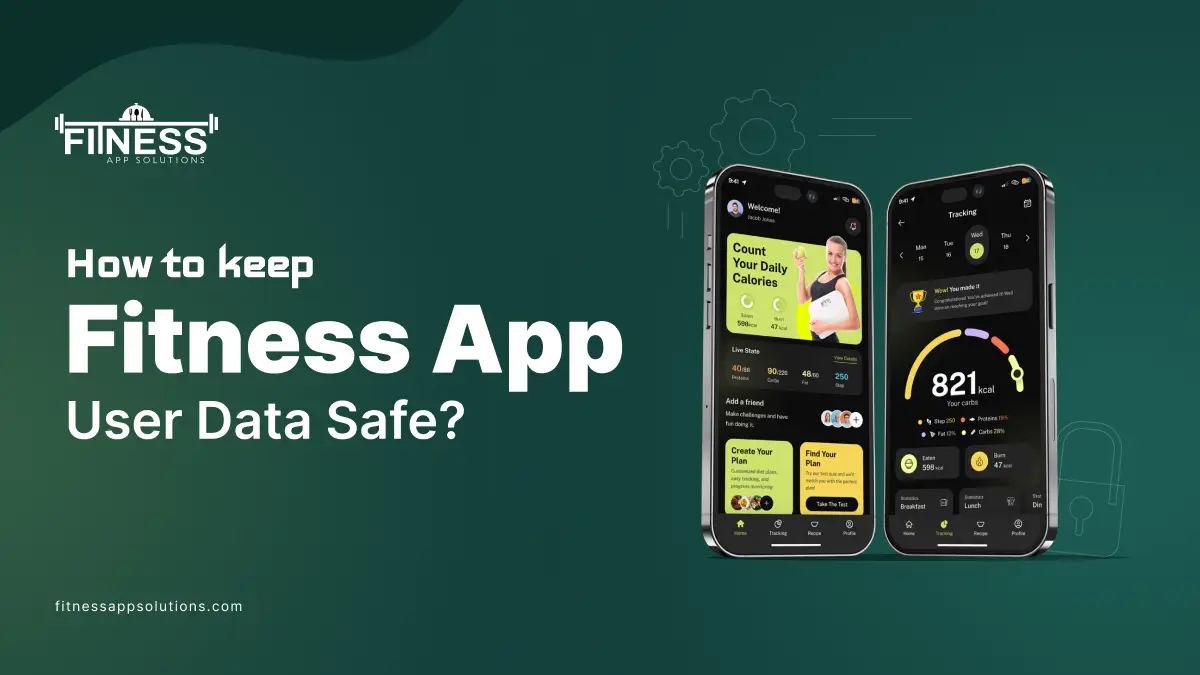Getting a reward or a free smoothie for hitting your daily workout goals sounds very motivating, fun, and healthy. But have you ever stopped thinking about what you’re giving away in return? Behind the sleek interfaces and motivational messages, many fitness apps quietly collect massive amounts of personal data, from your heart rate and step count to your sleep patterns, location, and even dietary habits.
According to recent reports, around 80% of this user data is shared with third parties, often without users being fully aware of how or why. So, while fitness apps can be great tools for staying on track with your goals, it’s crucial to understand how they handle your data and what you can do to protect it. So, let’s explore how to keep your fitness app user data safe.
What is the Importance of Privacy in Fitness Apps?
The fitness app is vital to health and fitness professionals. Privacy is essential in data management as the foundation pillar, especially in the relationship between clients and coaches.
1.Customized Protection
When you select an application for your daily exercise as a personal trainer, you ask your clients to share personal information like their blood group, weight, allergies, diseases, and more. Therefore, privacy is vital to ensure that this information is protected safely and is only accessible to collaborators or professionals who need access to provide the service.
2.Mutual Trust
Fitness app privacy data protection develops mutual trust between you and your client, but it also plays a vital role in dealing with vulnerabilities and security risks. This contribution consolidates solid relationships and promotes effective collaboration to retain loyal clients.
3.Regulatory Compliance
Apps must comply with regulations to avoid legal sanctions and demonstrate a commitment to data security. Meeting regulatory standards strengthens the application’s credibility.
How to Keep Fitness App Data Safe?

With the rising popularity of fitness apps and wearables, users share sensitive personal and health-related data like heart rate, sleep patterns, workout routines, and even real-time location. While these insights are valuable for achieving fitness goals, they also present serious privacy and security risks if not adequately protected. Here are eight best practices to help keep fitness app data secure:
Collect Only Necessary Data
One of the simplest and most effective ways to safeguard user data is to gather only the necessary data. Avoid asking for unnecessary personal details like unrelated location tracking, contacts, or social media access unless it directly increases the app’s functionality. Lowering data collection not only reduces risk but also increases user trust. Therefore, design your app to request permissions only when required and clearly explain why the data is needed.
Use Strong Encryption
All data in transit and at rest must be protected by industry-standard encryption protocols, such as AES-256 for stored data and HTTPS/TLS for transmission. This ensures that even if data is intercepted or accessed illegally, it remains unreadable to unauthorized parties. End-to-end encryption, like real-time GPS tracking, can also be used for highly sensitive data.
Implement Robust Authentication
Weak login systems make it easier for hackers to access user accounts. Implement multi-factor authentication (MFA) as an additional layer of security. Also, strong password requirements should be implemented, and biometric login options like facial recognition or fingerprints should be considered for better protection.
Provide Clear Privacy Policies
Transparency is key. Therefore, ensure users understand what data you are collecting, how it’s stored, and who it might be shared with. A clear and concise privacy policy helps users make informed decisions and reduces legal risk for their business. You can use plain language and highlight vital sections like third-party sharing and data retention.
Limit Third-Party Data Sharing
Third-party integrations, such as analytics or advertising services, can expose user data if not properly vetted. Ensure that any third-party service you use complies with privacy laws like CCPA or GDPR and avoid sharing sensitive data unless necessary. Therefore, we use data anonymization when sharing metrics for business purposes.
Regular Security Audits and Updates
Cybersecurity is not a one-time task. You can conduct regular security audits to identify and patch vulnerabilities in your server, app, and third-party APIs, stay updated with the latest security practices, and apply patches immediately. Therefore, you can monitor unusual behavior or access patterns indicating a data attack or breach.
Educate Users
Give users the tools and data they require to protect themselves. Offer simple guidelines on selecting strong passwords, identifying phishing attempts, and effectively utilizing app privacy settings. You can include security tips during onboarding or in your app’s help section.
Secure Wearable and Sensor Data
Fitness apps often sync with sensors and wearables like heart rate monitors, smartwatches, and monitors. You can ensure that data from these devices is encrypted and transmitted securely. You can work with device manufacturers that follow stringent security protocols and verify that data remains private during syncing.
What are the Common Privacy Risks in Fitness Apps?
Over-Collection of Data
Most fitness apps collect more personal information than is necessary, such as contacts, health data, and location, which raises concerns about how that sensitive information is used and stored.
Data Leakage & Breaches
Without proper security protocols, fitness apps can become targets for hackers. Breaches can expose user data like GPS history, health metrics, and personal identifiers.
Weak User Authentication
Some apps lack a strong login system, for instance, no two-factor authentication, making it more seamless for attackers to gain unauthorized access to user accounts.
Lack of User Consent or Transparency
Users are primarily fully informed about what data is collected and how it is utilized. However, vague privacy policies or hidden consent mechanisms can violate user rights.
Sharing with Third Parties
Fitness apps may sell or share data with advertisers, analytics providers, or partners without users realizing it, risking exposure to sensitive data.
Insecure Third-Party Integrations
APIs or plugins from third-party services like social media or maps may introduce security vulnerabilities, putting user data at risk if those services are compromised.
Poor Device Security
If an app doesn’t use secure encryption or storage, data stored on the device, such as health history or progress logs, can be accessed if the phone is hacked or lost.
Conclusion
Developing a user’s trust is vital in the fitness app industry. By adopting robust data protection measures, you decrease the risk of data breaches and legal issues and develop a loyal user base that feels safe sharing their health and fitness journey with your platform. Remember to always think from the user’s perspective; protecting fitness app data is not just a tech issue; it’s your responsibility.
Frequently Asked Question(FAQ)
1.Why is data security important in fitness apps?
Fitness apps collect sensitive personal data such as health metrics, location, and daily routines. If this data is exposed or mishandled, it can lead to privacy violations, identity theft, or personal safety risks. Securing this data protects both users and the app’s reputation.
2.What type of data does fitness apps typically collect?
Common data includes name, email, age, height, weight, workout history, heart rate, sleep patterns, location (via GPS), and synced wearable device data. Some apps may also request access to contacts, calendars, or cameras, though not all are necessary for core functionality.
3.How can users ensure their data is safe when using a fitness app?
Users should implement unique, strong passwords, enable two-factor authentication, and always read the apps’ privacy policies. They can also review app permissions regularly and avoid connecting to unnecessary third-party apps.
4.What are signs that a fitness app may not be secure?
Various warning signs include a vague or missing privacy policy, requests for excessive permissions like access to contacts or the microphone, a lack of two-factor authentication, and no regular updates or bug fixes.
5.Do fitness apps have to follow any privacy laws?
Yes, depending on where they operate, fitness apps should comply with privacy regulations like CCPA, GDPR, or HIPAA. These laws need data protection, transparency, and user consent for data collection and sharing.




